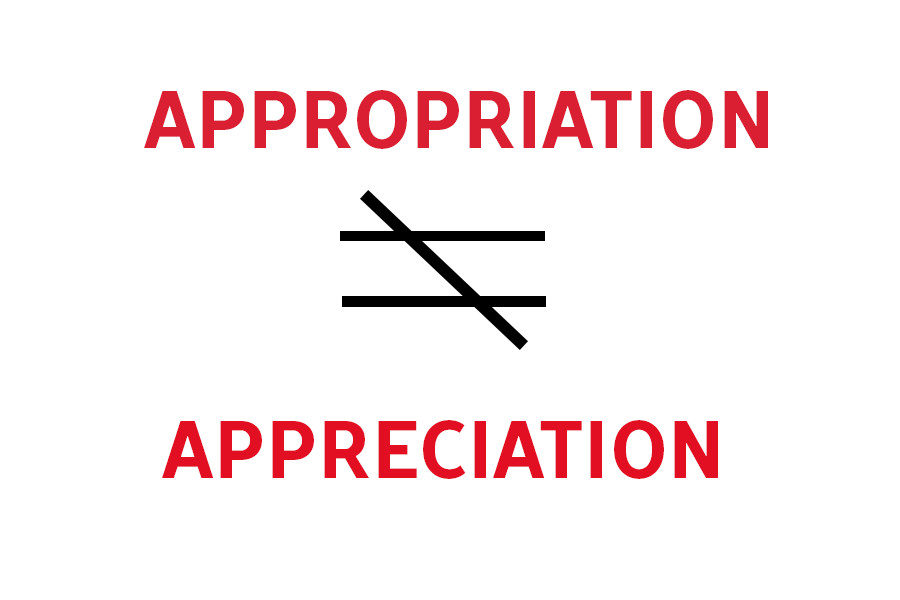Appreciation or Appropriation
As cultural appropriation becomes more common, the line needs to be drawn as to what cultural appreciation is versus appropriation.
PHOTO | Lucy Stofer
Whether it’s sports teams like the Washington Redskins or the pages of Vogue where white models are adorned with afros, cultural appropriation is everywhere. The topic brings up questions like whether or not white people wearing their hair in dreadlocks, or, more recently in the March issue of American Vogue, supermodel Karlie Kloss dressed as a geisha, is appreciation or appropriation.
Vogue’s March issue, also entitled their “diversity issue,” has been under fire for casting Kloss, a white woman, in a Japanese themed photoshoot. Kloss is dressed in a traditional geisha outfit and posed alongside a sumo wrestler in many of the photos. The theme could’ve been seen as appreciation and not caused as much controversy if Vogue wasn’t trying to use the shoot for their “diversity” issue. Using a white woman to represent another culture displays that Vogue doesn’t understand the true meaning of diversity. Kloss has since apologized publicly in a tweet saying that the photos were appropriating the Japanese culture and she regretted participating in the shoot.
While Kloss did apologize for the insensitivity of the shoot, it brings to light the bigger issue that cultural appropriation has became such a common thing in society that many people don’t even see the problem. What is too far in regards to taking elements of another culture? Does finding aspects of another culture beautiful and wanting to represent it personally count as appropriation?
One of the most common topics when it comes to cultural appropriation is Native American headdresses worn as Halloween costumes or to music festivals. While the people wearing them may think the headdresses look exotic or edgy, they most likely don’t know the history behind the headdresses or the rules Native American culture has about who is allowed to wear these pieces. Each component of the headdress has meaning and a purpose, and definitely wasn’t intended to be mass produced in a factory to be sold in the Halloween section of WalMart.
Appropriation is centered around stereotypes of other cultures and while people may not have bad intentions when they decide to wear a certain outfit or hairstyle, it’s the misrepresentation of the culture itself that’s the real problem. The appropriator takes the stereotyped parts of the culture without understanding the meaning or the struggles that the group of people have had. They embrace the aesthetic value of those stereotypes without making an effort to understand the significance and the culture behind it.
Eighteen-year-old actress Amandla Stenberg has been known to call out Kylie Jenner for wearing her hair in corn rows, and has expressed her feelings about appropriation of black culture in America. In a video she made on YouTube entitled “Don’t Cash Crop My Cornrows,” she discussed how appropriation is when a style leads to racist stereotypes and generalizations of where it originated, but is deemed cool when outsiders take the culture and use it for their own gain.
The difference between appropriation and appreciation is someone wanting to appreciate another culture, and take part in the beauty of another culture. Appreciation includes respect and knowledge of the culture and background. Taking time to understand the culture’s history is a big component of cultural appreciation, because then one would understand why the appropriation of that culture is offensive.



